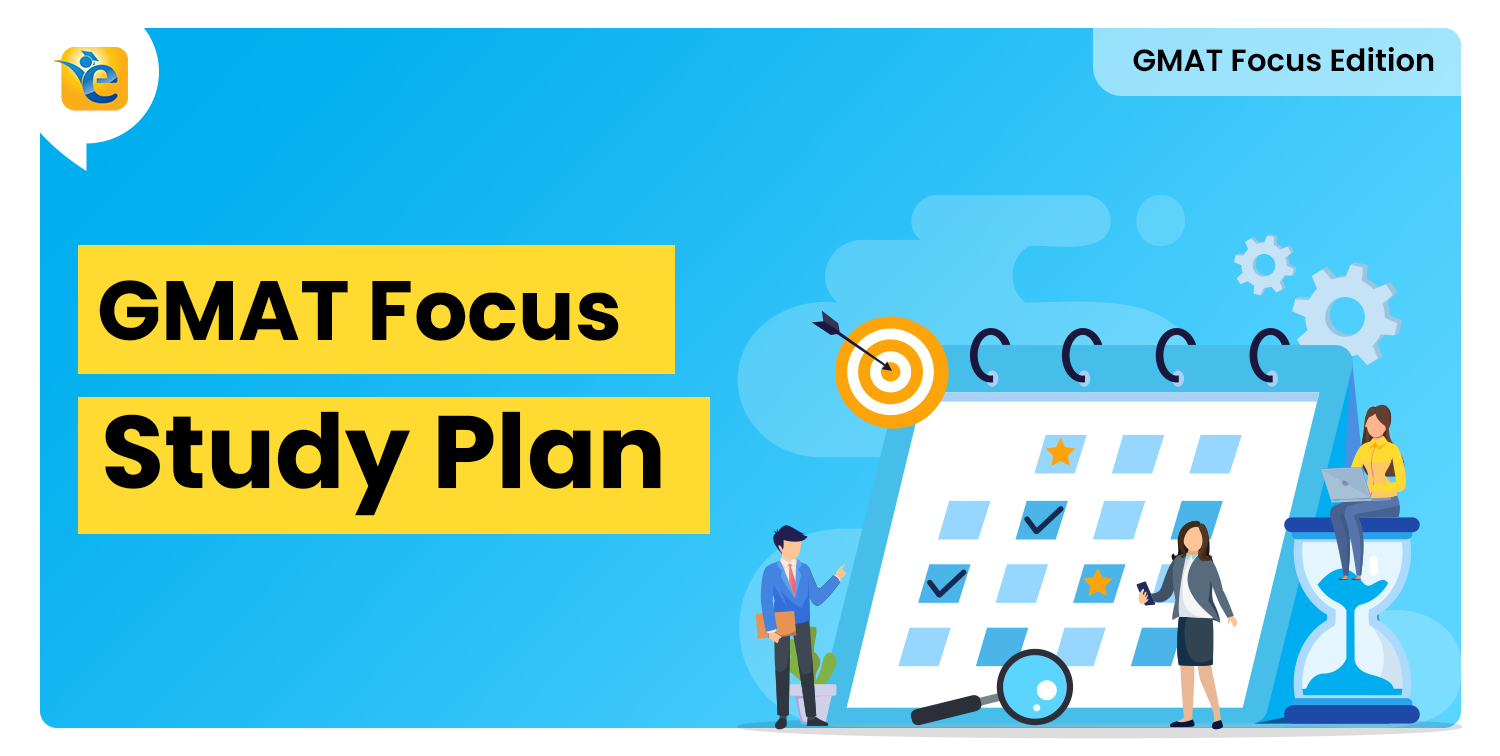As we just learned in the last article, apart from your ability in each sub-section, there are some other factors that can have an impact on your mock score. In this article, we will explore these factors. It is important to be aware of these factors for two reasons:
- Firstly, if these factors are not taken care of, then despite improving your ability, these factors may continue to pull your score down.
- Secondly, you devise your personalized study plan based on the abilities provided by the SIGma-X mock attempt. But what if these abilities numbers were impacted negatively by these factors. In that case, you may end up spending more than required time preparing for that sub-section.
So, let’s learn what these factors are:

Warm-Up Issues
Warm-Up issues are experienced if you attempt the mock test without sufficiently practicing each sub-section. Basically, when you approach the test without sufficiently practicing each sub-section, your brain does not remember exactly what to do in steps 1 or 2 or 3. And this can result in an ability number that is less than your true ability.
Imagine doing a practice session in tennis without warming-up your body. Lack of warm-up before an intense activity negatively impacts the performance of the person in that activity. That is exactly the experience that a student may have if he/she does the mock test without proper practice.
Example 1
In this example, the student got 49 ability in Algebra/Geometry sub-section.

Figure 1 – Warm-up effect – Time mismatch
But observe closely the timing information in blocks 1, 2, and 3. And compare the timing trend with the difficulty level of questions. Now it is logical to think that it will take longer to solve a higher difficulty level question. But this student took longer to solve medium difficulty level questions (in block 1) than he took to solve harder questions in Blocks 2 and 3.
This clearly indicates that his mind utilized questions in block 1 as warm-up to the intense activity in the subsequent blocks.
Now imagine – if this student had done “warm-up” before the mock test, he would not have taken that long to solve the easiest questions served to him. This would have given him more time to spend on the more difficult questions that he experienced in the mock test in subsequent blocks.
Thus, using questions in the first block to warm-up is an issue. And should be avoided at all costs.
Example 2
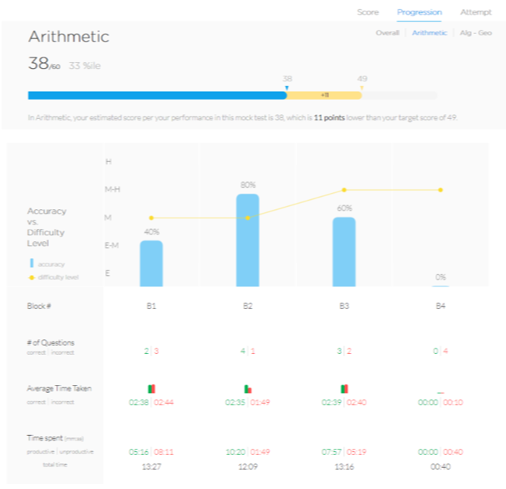
Figure 2 – Warm- up Effect – Accuracy Mismatch
In this example, this student has the ability of 38 in Arithmetic.
Observe blocks 1 and 2 carefully. This student has been served questions of same difficulty level in these two blocks. The time spent in answering these medium difficulty level questions is also the same. But observe that in the first block, the accuracy is only 40% but in the second block the accuracy is 80%. So, this is also another indication that the student is utilizing block 1 as warm-up block. Once the student’s brain is warmed up in block 1, he is able to solve questions in block 2 correctly.
How can you detect warm-up Effects?
Warm-up issues manifest in two ways and are seen in Blocks 1 and 2.
- In Block 1, student takes more time to solve easier questions.
- In Block 2, student has higher accuracy for same difficulty level questions as in Block 1.
If you are planning to take the GMAT, we can help you with a personalized study plan and give you access to quality online content to prepare. Write to us at acethegmat@e-gmat.com. We are the most reviewed GMAT prep company on gmatclub with more than 1825 reviews (as on May 23, 2019). Why don’t you take a free trial and judge it for yourself?
Missed Opportunities
Missed opportunities manifest when the student has the ability to solve a certain question but because he/she was not left with sufficient time for that question, he is unable to solve that question correctly. This happens in the case when the student wastes the time on questions that are beyond his/her reach or when a student spends an excessive amount of time on questions – i.e. time that is way beyond his/her takt time for that question type.
Example 1
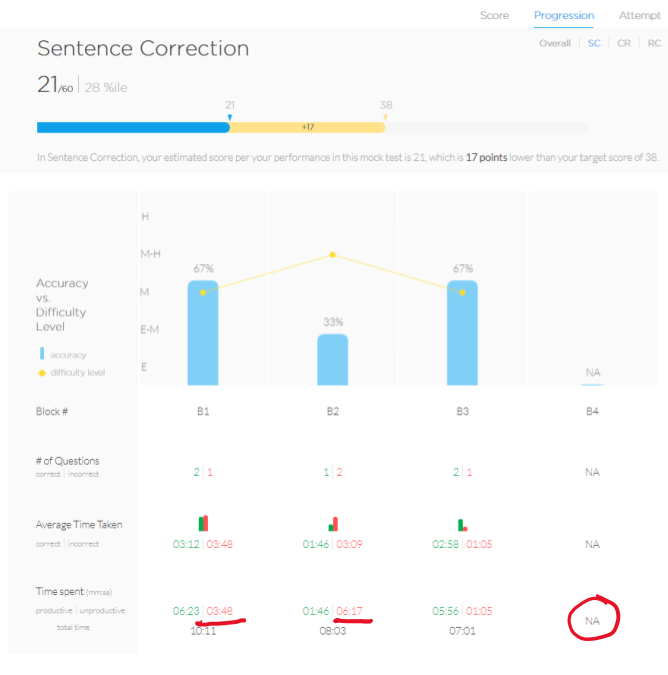
Figure 3 – Missed Opportunities
In this case, the student wasted almost 10 minutes on questions that were beyond his reach. Thus, led to the entire Block 4 to be a missed opportunity. The student could have been able to solve at least some of the questions in Block 4, but he did not even get that opportunity.
Thus, a student should know when to give up on questions.
Example 2
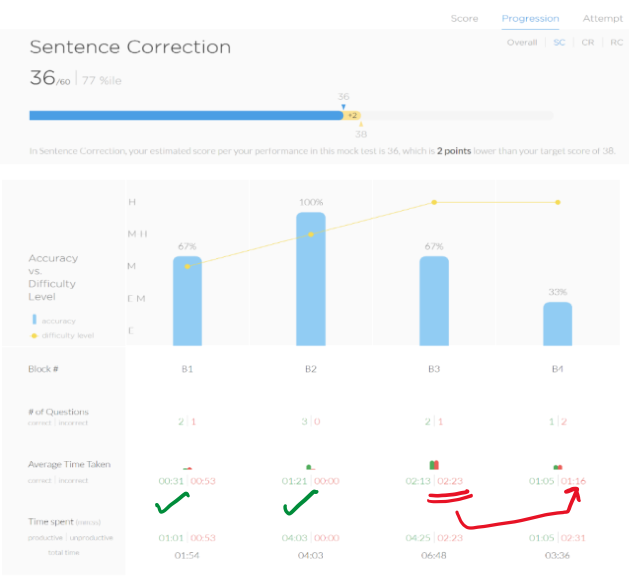
Figure 4 – Missed Opportunities
This is the example in which the student was served difficult questions but since he got too invested in one question in Block 3, he did not have sufficient time left for difficult questions in the subsequent block. Once again, the same theme – had this student knew that he needs to give up on that one difficult question in Block 3, he would have saved that precious time and allocated it to at least one question that he got wrong in Block 4. This would have bumped up his ability score in SC. Yet another classic example of missed opportunity.
Example 3
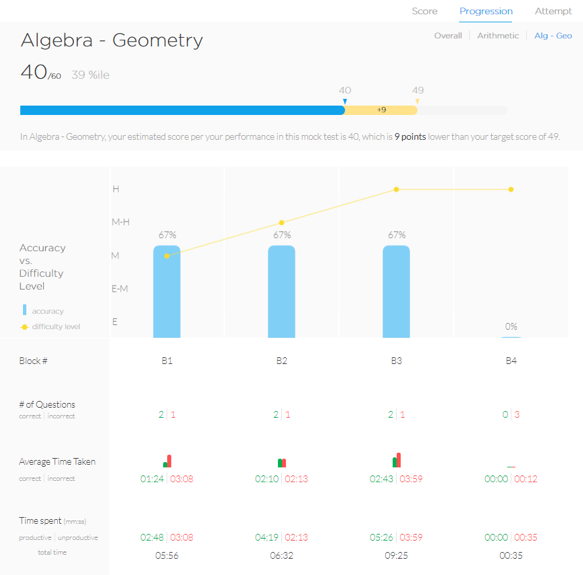
Figure 5 – Missed Opportunities
And the story continues. This is Algebra/Geometry sub-section. This student got way to invested in 2 questions in Blocks 1 and 3 – he spent 3 minutes and 4 minutes of these questions. And he got them both wrong. Imagine, if this student knew when to give up, he would have been able to save 4 minutes in all and those 4 minutes could have been used to answer difficult questions in block 4. Yet another missed opportunity.
How can you detect Missed OPPORTUNITIES?
So, in essence, whenever you see that you spent less than optimal time on questions that actually are from your areas of strength and you got those questions wrong, you know that these questions are missed opportunities. And that is because you gave certain other questions in the preceding blocks more than what they deserved. And typically, you see such instances of less than optimal time being spent on questions that are in Blocks 3 and 4.
Further Reading
Now that we understand the two factors that can negatively impact on your ability scores, let’s read this article to understand how we can battle these factors.


